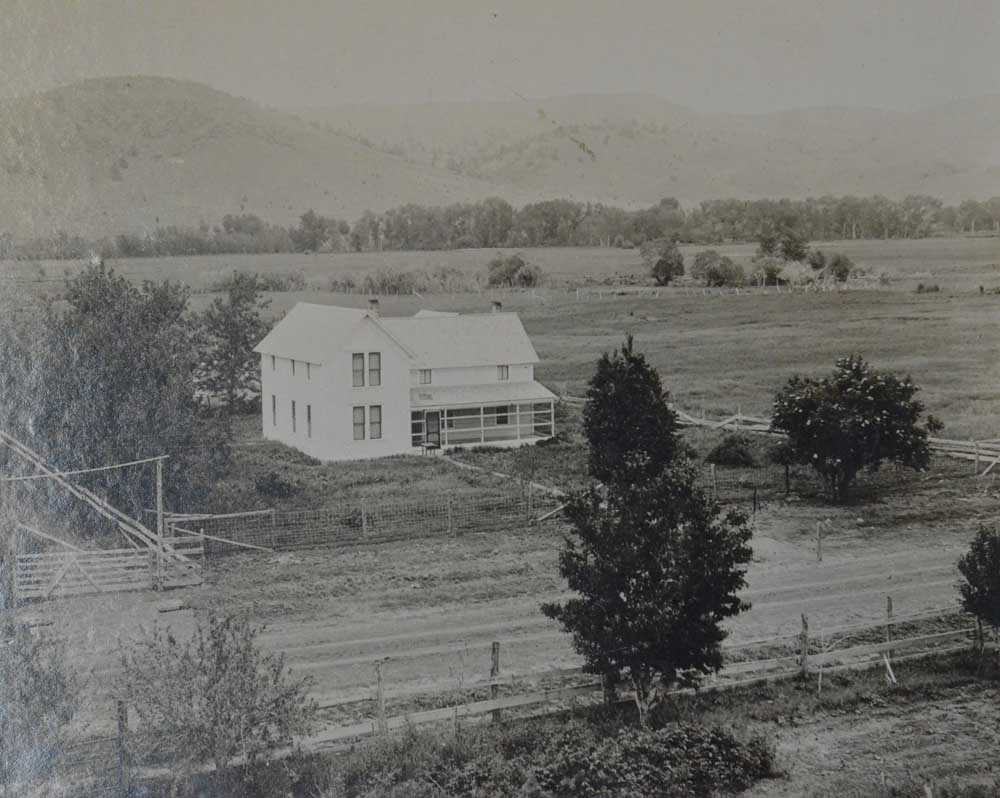Board officially restores family name to creeks
Published 1:15 pm Tuesday, September 24, 2019

- The Luce family farmhouse was built in June 1860 and still stands near milepost 158 on Highway 26 west of John Day. The Luce and Wyllie families, along with the Porters and others in the valley, were joined in marriage.
The legacy of a family name has been restored with the renaming of two creeks in Grant County.
Trending
Eric Lupien submitted the required paperwork in February 2018 on behalf of his wife’s family, the Wyllies, and learned of their success in April.
“We are pleased to inform you that the U.S. Board of Geographic Names, at its April 11, 2019, meeting, approved your proposals to change the names of two streams in Grant County with name Wiley Creek to Wyllie Creek,” Executive Secretary Lou Yost wrote.
Jamie Wyllie Lupien, Eric’s wife, was happy to see the family name restored.
Trending
“My husband is like a dog with a bone,” she told the Eagle. “Once he got a hold of this, he wouldn’t stop. It means that much to him.”
Official names
The U.S. Board on Geographic Names is a federal agency created in 1890 and established in its present form in 1947 to maintain uniform geographic names throughout the U.S. government.
Official names for geographic features became confused following the Civil War during a surge of exploration, mining and settlement across the West. Inconsistencies and contradictions for names, spelling and application became a problem for surveyors, map makers and scientists.
In addition to correcting names, the board takes public requests to name an unnamed natural feature. If the suggested name is for a person, the person must be deceased for at least five years and must have a direct or long-term association with the feature or made notable civic contributions.
Lupien requested the spelling for two streams in Grant County be corrected — the 11-mile-long Wiley Creek that flows from Johnson Saddle to Fox Creek and the 3-mile-long Wiley Creek that flows from near Sagebrush Spring to the John Day River.
Both creeks should be named for the Wyllie family, Lupien said, and especially for William James Wyllie (1848-1928) and his wife, Edith (1863-1934), who homesteaded and raised sheep in the two areas and were active in the community.
In addition to completing an official form, Lupien submitted pages from a Grant County history book by George R. Miller and a family history by Laurie A. Wyllie.
He also submitted a page with an incorrect spelling for William Wyllie from the seventh edition of “Oregon Geographic Names.” Under the listing for “Wiley Creek,” the book states, “In 1877, William Wylie homesteaded at the mouth of this tributary of John Day River west of Mount Vernon.” How “Wyllie” became “Wylie,” or “Wylie” became “Wiley,” is not explained.
Wyllie family
The history of the local Wyllie family begins with James Wyllie, who was born in Ayrshire, Scotland, in 1818 and immigrated to Pennsylvania via Canada 20 years later. He married Margaret McGregor in 1845 and began raising a family in West Reading, Pennsylvania.
Laurie Wyllie, James Wyllie’s great-grandson, wrote a history of the Wyllie family. According to the history, the Wyllies moved to California in 1853 and settled near a gold-mining town. Their second child, William James Wyllie, left home at 14 and stayed with the Stewart family in Sacramento at a house on the corner of L and Ninth streets. Years later, after he acquired livestock in Eastern Oregon, his brand was L9.
William James Wyllie and Billy Stewart, both young boys, bought 400 ewes and put them on a ship bound for Oregon. They stayed for a time in Dilley before herding the sheep in 1868 to Dayville and Murderers Creek — to ranch land Stewart’s father had located in 1862 during the Canyon City gold rush.
The two were lifelong friends. William James Wyllie ran sheep and horses, and in 1871 Billy Stewart brought cattle to Dayville. Much of Dayville was sheep country at the time, with herds run by the McKays, McRaes, Murrays, Mascalls and Cants — all Scottish descendants.
The families kept herds of 800-1,000 head of sheep on open land around Dayville that nobody had title to. The families needed to cooperate to avoid range and sheep wars, which did occur. In his account, Laurie Wyllie suggests “my grandfather and Billy Stewart ran pretty roughshod over anything or anybody that got in their way during those early days.”
William James Wyllie set up homesteads in four locations — in the South Fork drainage, on Wyllie Creek east of Dayville, on Wyllie Creek in Fox Valley and on land near Drewsey. He married Florence Edith Porter in 1883 near John Day and moved to Drewsey in an area still known as Wyllie Field.
The notorious winters of 1887 and 1888 wiped out livestock herds across the West, with freezing cold and feed shortages. Shipping feed in those difficult frontier times was nearly impossible. Four years later, the Wyllies packed up and moved to the John Day Valley and Dayville.
The Wyllies played important roles in the incorporation of Dayville. William James Wyllie was the first marshal and served as justice of the peace and clerk for the local school district. Edith Wyllie, mother of nine children, was Dayville’s first city recorder and served as postmistress for many years. One room in their house functioned as the post office.
“Their door was always open and their home resembled Grand Central Station — someone coming and going all the time,” a Grant County family history book states. Seven members of the Wyllie family can be seen in a popular historical photo of the Dayville Hotel taken in 1902.
About two dozen descendants of William James Wyllie continue to live in Grant County, Jamie Lupien said, including the Layton Wyllie family, the Kelly Wyllie family and Jamie’s mother Donna Wyllie.
She is especially proud of brothers Russell and Lindsey Wyllie who took over the Pass Creek Ranch near Long Creek and have continued the Wyllie family’s ranching traditions.
Eric and Jamie say they are so happy now that the Wyllie name will be correctly displayed, giving honor to her ancestors and their efforts in contributing to the beauty of community in Grant County.









